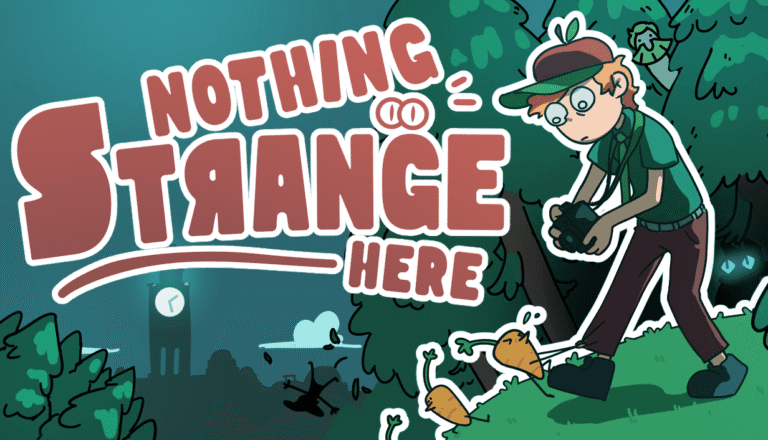
Arctic Awakening doesn’t just drop you into the frozen wilderness it hurls you there with the force of a shattered airplane and leaves you scrambling for both survival and sanity in equal measure. This latest narrative adventure from GoldFire Studios takes the beloved formula that made games like Firewatch unforgettable and transplants it to the unforgiving Alaskan tundra, where your only companion is a court-mandated therapy bot named Alfie who’s programmed to keep you from completely losing your marbles. The result is a game that’s equal parts breathtaking and frustrating, combining stunning visuals with a story that occasionally stumbles over its own ambitious foundations.
Plane Crash, Life Flash: What Exactly Are We Dealing With?
Arctic Awakening positions itself firmly in the narrative adventure genre, specifically the story-driven exploration subset that prioritizes character development and atmospheric storytelling over traditional gaming mechanics. The game follows Kai, a pilot whose routine supply drop mission goes catastrophically wrong when a mysterious storm literally slices his plane in half, sending his co-pilot Donovan tumbling into the void and leaving Kai stranded with nothing but frozen wilderness and Alfie, his robotic therapy companion. It’s a first-person experience that spans five episodic chapters, each clocking in around two hours, making for roughly a 10-hour journey through psychological trauma and environmental storytelling.

The game draws clear inspiration from modern adventure gems like Firewatch, What Remains of Edith Finch, and SOMA, focusing on character relationships and atmospheric storytelling rather than complex gameplay systems. Unlike hardcore survival games such as The Long Dark or Green Hell, Arctic Awakening uses survival mechanics more as narrative reinforcement than genuine challenge, keeping hunger and mental health systems simple and manageable.
Lost in Translation: A Story That Burns Hot and Cold
The narrative backbone of Arctic Awakening revolves around three central mysteries that unfold throughout the five episodes: who exactly is Kai and why does he require court-mandated therapy, where is Donovan and what happened during the crash, and what dark secrets lie buried beneath this particular patch of Alaskan ice. The game’s opening sequence efficiently establishes these questions while immediately throwing players into the aftermath of disaster, creating an effective hook that pulls you into the frozen wasteland.
However, the story’s execution doesn’t quite match its ambitious setup. While the initial mystery feels compelling, some reviews note that the eventual revelations suffer from predictable signposting that becomes apparent as the episodes progress. The personal dynamics that made Firewatch so memorable that crackling tension between characters are attempted here through the relationships between Kai, Alfie, and the radio-connected Donovan, though with mixed results.
The dialogue system offers four main response types during conversations, allowing players to shape Kai’s personality and relationships throughout the journey. These choices do carry weight, particularly in the game’s final act, though the episodic structure means many decisions feel more cosmetic than consequential until the climactic moments. The episodic format, while thematically appropriate, creates artificial breaks in what could have been a more fluid narrative experience.
Surviving by the Skin of Your Digital Teeth
Arctic Awakening deliberately eschews complex survival mechanics in favor of streamlined systems that support rather than dominate the narrative experience. Kai must manage basic survival needs through simple resource gathering, finding food to prevent starvation and maintaining mental wellness through environmental interactions. These mechanics serve more as thematic reinforcement than genuine challenge, keeping the focus on exploration and story rather than resource management anxiety.

The core gameplay loop centers around exploration, environmental interaction, and dialogue choices. Players traverse snowy landscapes, solve light puzzles involving switches and environmental obstacles, and engage in conversations that shape character relationships. The game includes breathing exercise mechanics triggered during Kai’s panic episodes, where players help him stay calm through prompted interactions, a feature that adds atmospheric tension even when it occasionally interrupts conversational flow.
Navigation can prove challenging due to limited waypoint guidance, relying instead on environmental signposting and compass direction that works effectively most of the time. When it fails, players may find themselves wandering through similar-looking snow-covered terrain, unsure whether they’re on the correct path or exploring off the intended route. The game’s predetermined paths create boundaries that sometimes conflict with the supposed freedom of wilderness exploration.
The Good, The Bad, and The Frostbitten
Arctic Awakening excels in several key areas that elevate it above typical indie adventure fare. The visual presentation stands as the game’s crown jewel, featuring impressive art direction that captures both the serene beauty and lurking menace of the Alaskan wilderness. The Firewatch-inspired aesthetic translates beautifully to the frozen landscape, creating moments of genuine awe when players pause to absorb the sweeping vistas and atmospheric lighting. The technical presentation maintains solid performance for most players, though experiences vary.

The audio design deserves particular praise, with an ambient soundtrack that perfectly complements the emotional journey. Every musical cue feels carefully crafted to enhance the introspective mood, creating memorable atmospheric moments throughout the experience. Voice acting quality varies throughout the game, with some performances hitting emotional highs while others feel less consistent.
On the negative side, technical issues affect some players’ experiences, including progression-blocking bugs that require checkpoint reloads or patches to resolve. The episodic structure feels artificially imposed rather than naturally integrated, creating pacing problems that disrupt narrative momentum. Most significantly, Alfie’s character development doesn’t fully realize the potential suggested by the premise while he serves the story adequately as a therapy companion, he lacks the dynamic personality that would make players genuinely invested in their robotic relationship.
Who Should Brave This Digital Blizzard?
Arctic Awakening will appeal most strongly to fans of narrative-driven adventure games who prioritize atmospheric storytelling over complex mechanics. Players who enjoyed Firewatch, What Remains of Edith Finch, Gone Home, and similar story-focused exploration games will find familiar territory here, though they shouldn’t expect the same level of emotional impact or narrative innovation. The game suits those seeking a contemplative, dialogue-heavy experience rather than challenging gameplay or intensive survival mechanics.
Casual gamers looking for accessible storytelling will appreciate the streamlined mechanics and straightforward progression, while hardcore survival enthusiasts should look elsewhere for their fix of brutal resource management and crafting systems. The game’s 10-hour runtime makes it ideal for players seeking a substantial but not overwhelming narrative experience. Those interested in contemporary themes around AI, therapy, and human-machine relationships will find thoughtful exploration of these topics, even if the game doesn’t fully capitalize on their potential.
Final Verdict: A Beautiful Journey Through Familiar Territory
Arctic Awakening succeeds as a competent entry in the narrative adventure genre while falling short of the emotional heights reached by its influences. The game’s impressive visual presentation and atmospheric soundtrack create genuinely memorable moments that showcase the talent and dedication of its development team. When the experience flows smoothly, players will find themselves genuinely invested in Kai’s journey through both physical and psychological wilderness.

However, technical issues, predictable story elements, and missed opportunities for deeper character development prevent the game from achieving true greatness. The relationship between Kai and Alfie, while functional, never quite reaches the emotional resonance the narrative clearly aims for, leaving players with a companion who serves the story adequately without becoming truly memorable. While the game explores interesting themes around trauma, therapy, and survival, it doesn’t push these concepts far enough to create lasting impact.
Final Score: 4.2/5
Arctic Awakening represents solid craftsmanship in service of familiar ideas rather than groundbreaking innovation in interactive storytelling. For players seeking a beautiful, contemplative journey through frozen landscapes with competent storytelling and gorgeous visuals, the game delivers exactly what it promises. Those hoping for the next Firewatch or What Remains of Edith Finch may find themselves wishing the game had pushed harder against the boundaries of its genre rather than playing it safe in well-traveled territory.
This review of Arctic Awakening is based on the PC version, with a code provided by the game’s publishers.


